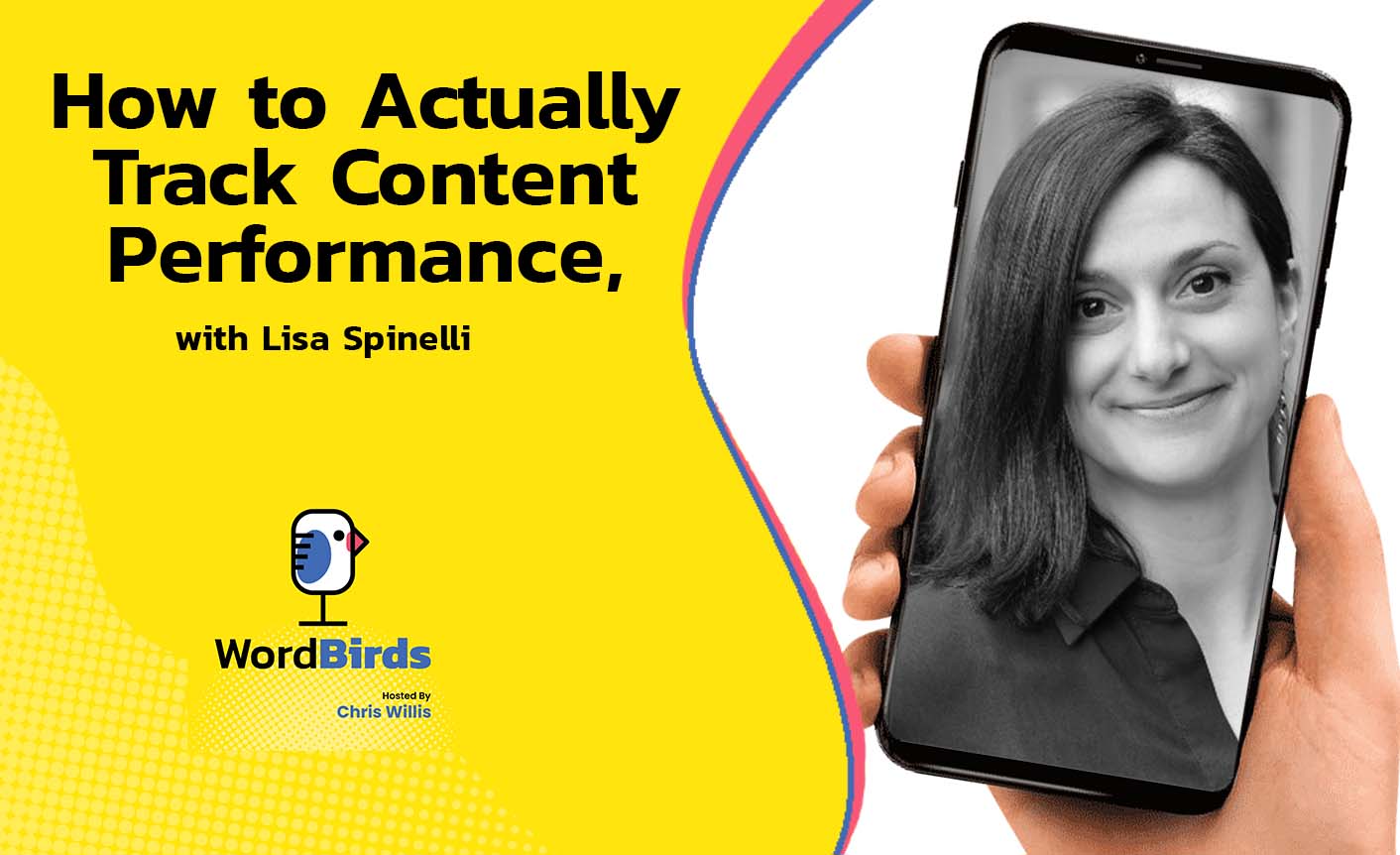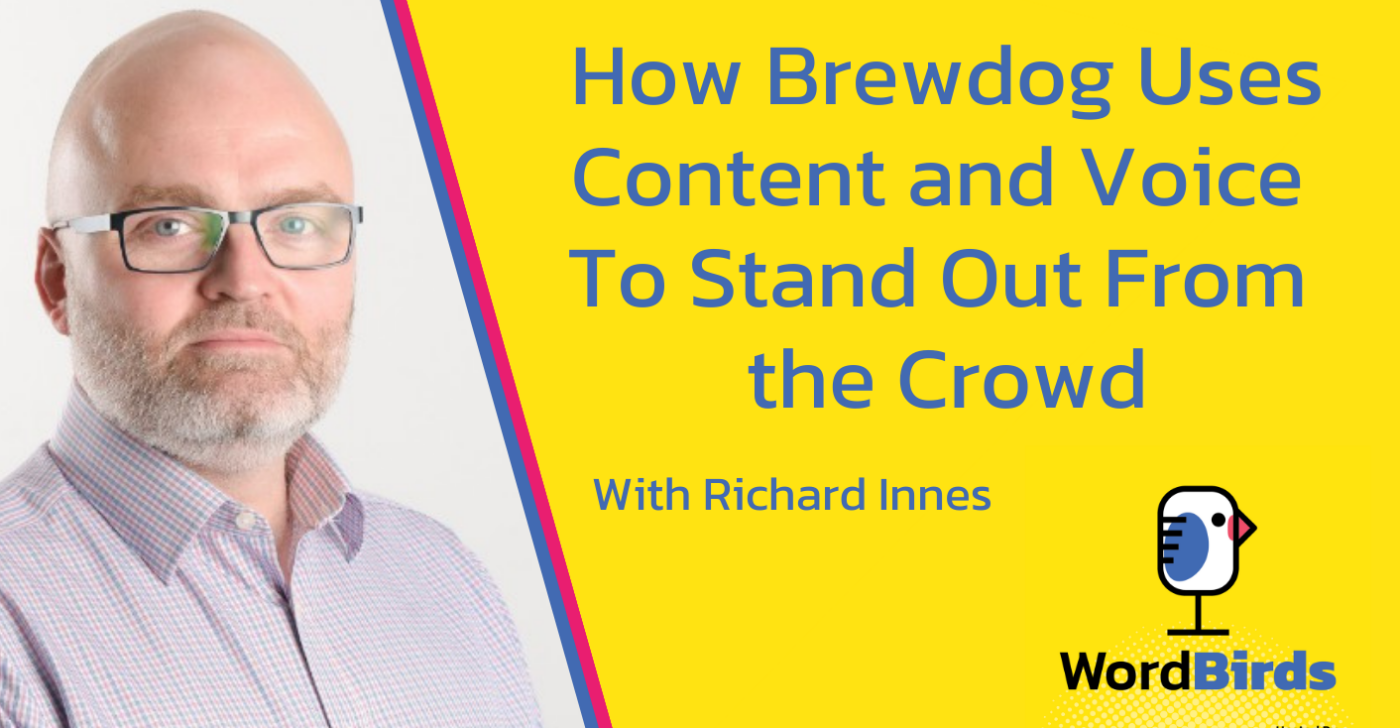How do you track the performance of your content? How do you know what types of content people are sharing and what aren’t being shared? What kind of strategies should you be using to maximize content performance? These are all the questions that will be answered in today’s episode.
Join Chris Willis as he talks with the director of content strategy at Degreed, Lisa Spinelli. Learn how Degreed tracks their content performance and some of the strategies they use. Understand all the aspects of your content funnel today.
Watch the episode here
Listen to the podcast here
Read full episode transcript
Welcome to Word Birds, a birds of a feather conversation between people who care about words. On the show, we have self-professed “spicy little Italian,” Lisa Spinelli. Lisa is the Director of Content Strategy for the Learning Management System, Degreed.
We’re going to talk about chasing content performance, and about the vision and dream of better content reporting among other things on the show. Let’s go ahead and sit back, and get some insight from the flock.
Lisa, welcome to the show. I’m excited to have you here.
Thanks for having me, Chris.
I would like to understand out of the gates and our audience would like to understand a little bit more about you. Tell me a little bit more about you and what you do.
I’m a spicy little Italian who wound up going from journalism to content marketing. I was unwillingly moved away from Rome to Oklahoma City by my now veteran husband. I have worked in both the light and dark sides of content, although I never strayed fully into PR. I took one step back. I didn’t go into the absolute dark side.
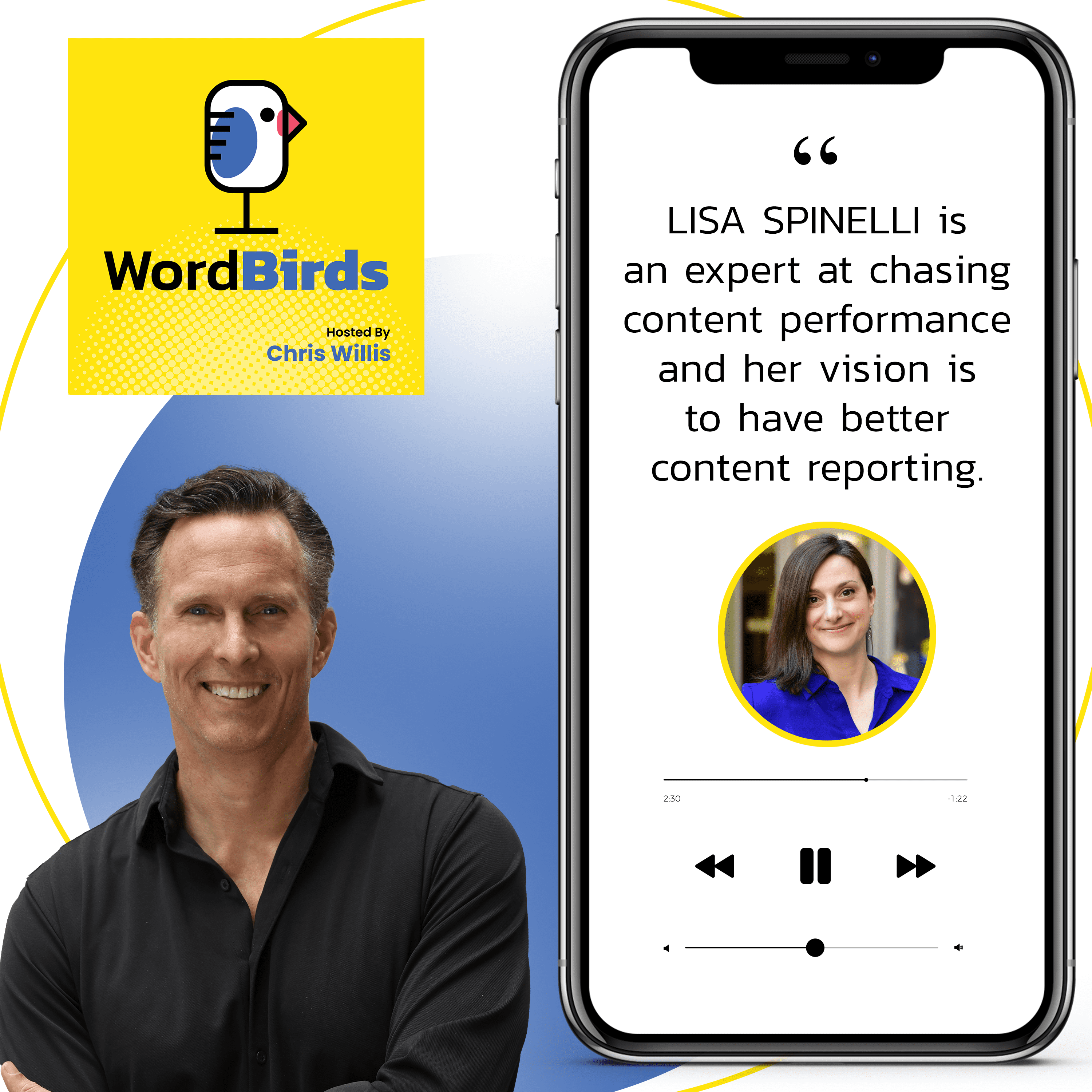
I fell in love with the learning and development space after I was doing content at ATD, which is the Association for Talent Development, which used to be called ASTD back in the day. I got to Degreed now through contacts from there. In the industry, I love doing a bunch of content which I’m skilled at, and I am having a great old time.
What did you study? How did you end up in journalism?
I studied Journalism.
You studied something that you ended up doing.
I know it was weird. When I was an undergrad, they didn’t have a Journalism degree at UVA. I was up in Northern Virginia doing HR work at some point. A friend of mine who is a DJ was like, I’m going to start a local DJ magazine. I was like, “I’ll write for it.” I figured, “This is way more fun than doing HR. Let me see if I can do this full-time.” I applied to Columbia’s grad school program, got in there, and then decided to do journalism for a while.
Were you then a full-time DJ magazine?
No. I was a terrible DJ. We won’t go into any of that.
Fair enough. You’re the Director of Content Strategy. I feel that’s a lot of things to a lot of people. Content strategy is a widely used and yet misunderstood area of the business. I like content, I like strategy. I feel like they go together. I’m going to call myself a content strategist. Is there more to that than that? Explain what you mean.
I didn’t come up with the title. I didn’t create that for myself. I was hired as an actual strategist because they had a lot of people doing content. This happens a lot of the time to a lot of organizations. People jump in and they start doing whatever words they think should be the keywords for the company. They start producing a bunch of content around those words, ideas, or hot trending topics.
There’s not a lot of, “What do we have? What do we need? Where are we going?” Also, it’s looking at all the pieces that are working and not working. Why are they not working? What does that mean? It’s a lot of analysis, and strategic thought is one of my Clifton’s Strengths by the way. It’s top five. Thank you very much. I’d be interested to know yours, Chris. Do you know yours?
I don’t.
You’re going to have to go take the test after this.
I will. I’m excited to know.
It’s strategy, looking at all the pieces, and road mapping for the future. It’s fun and exciting. It’s exciting if what you think is going to work actually works.
How well aligned are you from a content strategy standpoint with the revenue engine of the business? Are you integrated with the business results? Are you creating content specific to objectives and goals from a revenue standpoint?
Yeah. At Degreed, there’s a big push to managing towards the constraints. It’s a business model, which I never took any business classes. I would’ve failed miserably.
I have a Theater degree.
I took a couple of Accounting classes in college, and that didn’t go well. I use a business idea model that people use and manage to the constraints. What our constraints are now is a push toward content and all things within the organization. As a revenue-generating focused organization, unlike nonprofits that I’ve worked at before, we are working toward generating leads, closing deals, and all the things that nonprofits are not too concerned about.
A lot of people just jump in and start doing content around ideas or trends without really knowing what they need or where they're going. Click To TweetMy content team is measured on the pipeline because there isn’t a lead that we create that doesn’t come from something that the content organizations created. They’re the bait for everything that we do. Once we bait you in, we have to provide you with premium something, and it’s generally premium content. They’re directly aligned with the rest of the revenue engine as if they were demand gen, but two completely separate organizations supporting each other. It seems to work best in that model.
Is that the purpose of the content that you created at Degreed? Is it around the creation of leads? Is it around the creation of awareness? What are you trying to accomplish?
Everything. I have a huge team of two now, but we’re mighty. We’re all across the funnel. We’re doing concepts, development, production, and quality assurance around all stages. We have four stages of the funnel. We’re not alone in our little two-person teams. There are freelancers and things like that who help out.
Are you creating everything in-house or are you working with agencies and externals?
Yes to all the other pieces because there’s no way that in my vision for the future, two people can do this without wanting to hurt themselves at the end of the day.
I imagine you’ve built out a personality for the business at least from the content that you create. Is that fair to guess that you’ve done the tone of voice, clarity levels, education level of your audience, and that type of thing?
We have personas and we have a specific style and tone at Degreed. Unlike a lot of other Software as a Service types of companies that you’d see, it has a specific branding. We’re in tune with that branding. The tone and the style of the writing are all around that.
I’m going to use a difficult term for folks, but I’m going to say govern. How are you governing all those externals that are creating content so that what comes into your business is ready to be used or do you have to do that? Do you have to retrofit everything?
We’re currently in the process of ramping up. I just started in April. We have undergone shifts and changes since the last three months that I’ve been there. We do have freelancers that are working and we do our own style guide check on it. Everybody who’s hired has access to our style guide and in theory, is looking it over and understands what we’re trying to do. We may be injecting some of our personality, tone, and everything into the pieces. It’s all there readily available for anyone.
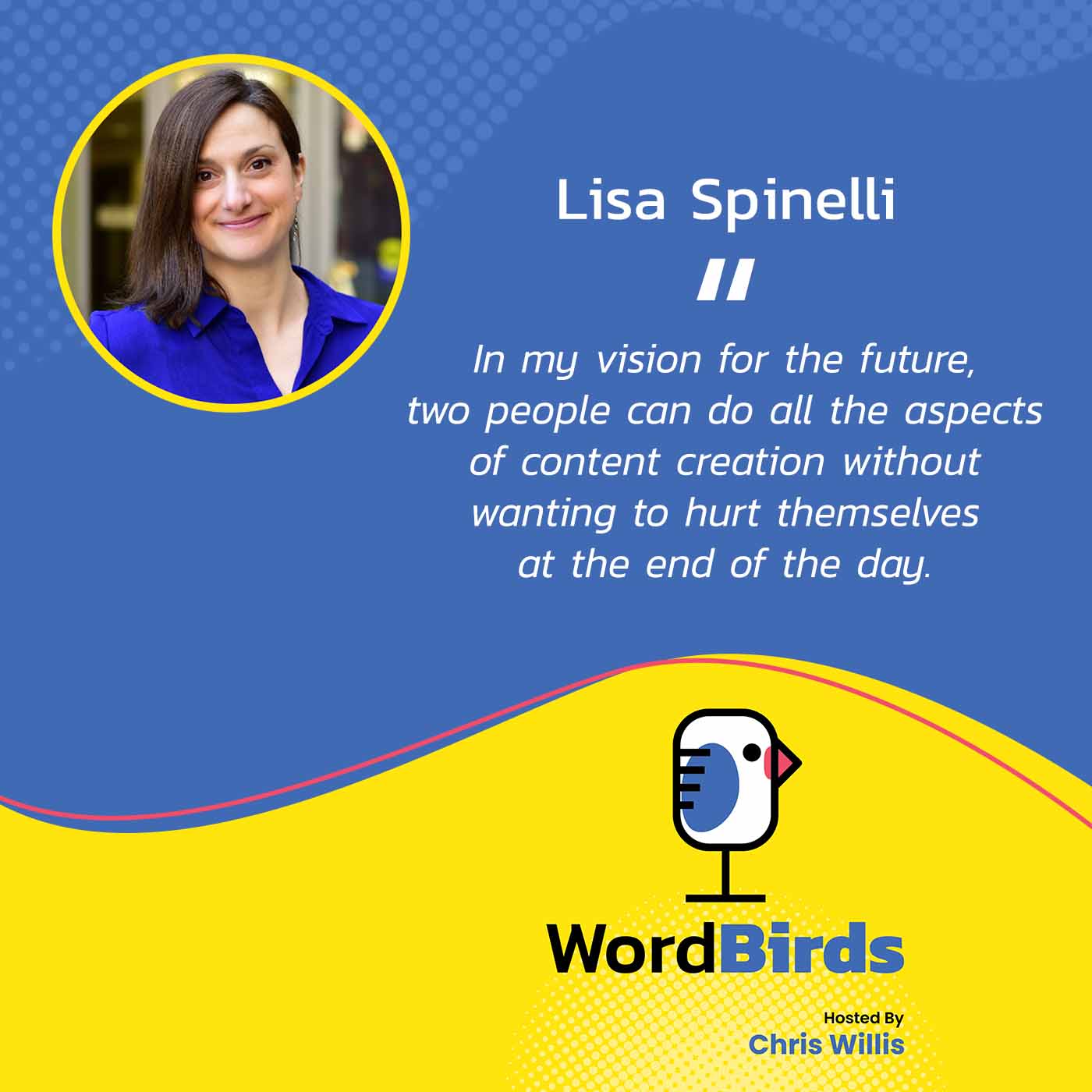
I can’t tell you how much I love reading company style guides and how often I do it.
It’s amazing reading material.
My company makes that so that I don’t have to do it. It’s built into our product. Sitting where you’re sitting, what’s your biggest challenge in creating content that’s going to drive the needle for the business?
Part of it would be resources. You never have enough resources that you want because as soon as you get a little bit of what you want, you want more. That’s part of the problem. There’s always the problem of salespeople giving out your content, and then there’s no way to track who’s reading it, how much they’re reading, heat mapping, and that kind of stuff.
That’s a huge thing for me. I agree with that. That’s a huge issue. You’re going to get me on a rant, but I have this vision and maybe you have a shared vision of a single document, single place, and infinite tracking.
If this is a piece of content. I want it to live in one place. I want it to be able to be used for whatever I want to use it for from that one place. If it’s a piece of product material, it lives in one place. If a salesperson shares it, they share it from that place. If people come back to that place to read it, I can see that it’s been shared. I can see that it’s consumed. I can see that it’s internal or external. I can understand how my content is being used and by whom so that I can build a better product for our audiences.
I feel like I got a lead on how to do that, but it’s difficult because people take things. They fix things, change things, move things, and copy things under their computers. Before you know it, that single slide deck that you created that you thought was your masterpiece has been taken and changed many times. It’s unrecognizable. I see this vision so clearly, but nobody else cares about my vision.
I hope they’re not changing things around too much. I know they probably are a little bit. Now you made me even more sad.
They’re changing things. As soon as you give them the keys to something, they’re going to change it. We don’t live in a world where everything is PDF anymore like the way it used to be. Even better, when things used to be printed and people would come and take them out of the rack in your office. I used to have the coolest glass racks that hung on the wall. You’d come and you’d take your marketing material out of it, and you’d head out to your meeting. We don’t need that anymore.
We take Google Docs and change them. It’s very difficult. This isn’t an endorsement, but I’m working with a company called Paperflite in India. They’re a content repository. They’re a younger company and they’ve been responsive on this topic. I’ve been working directly with their product owner and their CTO to try and get some sense of where I’m headed with this. I feel like we can get there, but it would be transformative to be able to do this.
It’s difficult to rein in a whole organization that’s constantly growing and evolving around that single view of a piece of content. Envisioning a world where you could know every single place that your content has been would be amazing. That work at Content Management Systems that are like, “We do that. Call me.”
You never have enough resources that you want because as soon as you get what you want, you want more. Click To TweetI’m going to get her email and send her a note now.
It’s free rein. You know how to find me. Tell me that you make this.
We have spots where we could be tracking it better but again, it’s resources.
It’s hard. That understanding and maximizing of resources by working on the right things is exciting because much like you, we’re a small organization. We’re serving some of the biggest companies in the world. We need to have it together, know what the demand is, how content is being used, where it’s being used, and where we need to change it because we’re also looking at just the individual results of each piece. We created this and spent a dollar amount on this, people, time, effort, and potentially actual money if we did it externally.
How do you measure the ROI of content when you can’t wrap your hands around it anymore? It’s everywhere. It makes it difficult to know where to put your investment because I don’t know if this was impactful. I think it was. Anecdotally, it feels like it is.
I know that you’ve thought that at some point, you feel like this is a great piece of content. Getting to that answer would be the holy grail because then you take your minimal resources and you point them at the things that are working.
The issue is you can track well with certain systems for those leads. Sometimes you can track them for marketing qualified leads, and then it starts to get a little trickier like, “What are the grades of those leads? What converted down all the way to a customer?” Although it wasn’t that person that became the customer. Was that counted towards it?
You need a multi-touch view of everything, and then that gets time-consuming and expensive. It takes many years to see how much content you’ve produced over the years influencing one company to come with multiple people. It’s hard to track content any which way. Even if everybody is doing everything 100% accurately, it’s hard to track it. The lead time for it can be six years in the making before it has a big influence. You believe it’s only a week, but that usually isn’t the case.
We’re getting closer. It’s still one of the bigger challenges that I deal with on a day-to-day basis because we are content marketing heavy in our approach. I want to know more all the time. We can know about our demand gen organization and the funnel that the sales team is working on. All those things are easier to track. It’s challenging in its ways but easier to track. The content has a life of its own.
I agree. We’re like surgeons here.
Outside of all of that data that we’d love to know, how are you gauging successful versus challenged content? How do you know or how do you think you know what’s working and where to take your decision-making?
As much as we were talking about the fallacy of the tracking systems, we can track at least how much it’s hitting the goals of what we’re placing upon the content. Is it getting opened? How long are people spending on these pieces? We can heat map pieces to a point and see where people are looking. There’s some analytics we can do to see what they’re looking at.
We’re starting to do this nice thing where we go back and look at all the multiple touches. It’s the multi-touch approach for when we do land a big client and see all the different pieces that they touched and the things that they didn’t touch. That speaks volumes to me about what pieces are working and being shared over and again.
Who’s doing that work? Is that your team or is that marketing operations?
That’s marketing operations. It’s great because this is one of the first times that I’ve had anybody in a marketing ops team helping out. Usually, it’s been our little teams trying to figure out what people were looking at with archaic types of systems to figure it out.
Not to give a plug or anything, but we’re using HubSpot, and that’s nice. We’re using Domo and a bunch of tracking tools. It’s nice to be able to have higher-level tracking involved. As far as the future goes, It’s all around the new marketing, messaging SEO, using SEO tools, online software tools, and being able to do those analytics as to what we can go after, and we’re close to being number one, and things like that.
Where does it go from here? What’s your biggest challenge in 2023? What are you looking down the pike at thinking, “This is the next thing I need to address?”
Like a lot of content marketers, at the current organization I’m at, we have looked in the past at brand awareness and lead gen. Now, we’re looking forward to some of that low-on-the-funnel type of content. That’s going to be hard to track whether or not it’s doing super well, but it’s what we need. That’s where we’re putting a lot of our attention.
The way I think about it, it’s going to be measurable in sales velocity essentially. If you’re moving more deals through the funnel faster, that’s one of the reasons why it’s that middle to end of the funnel content. You can never know, but if you look at the last 12 months of performance, then you make a change, and look at the next 12 months of performance, you should be able to see a velocity shift as a result of better content designed for that stage, helping customers through the purchasing process.
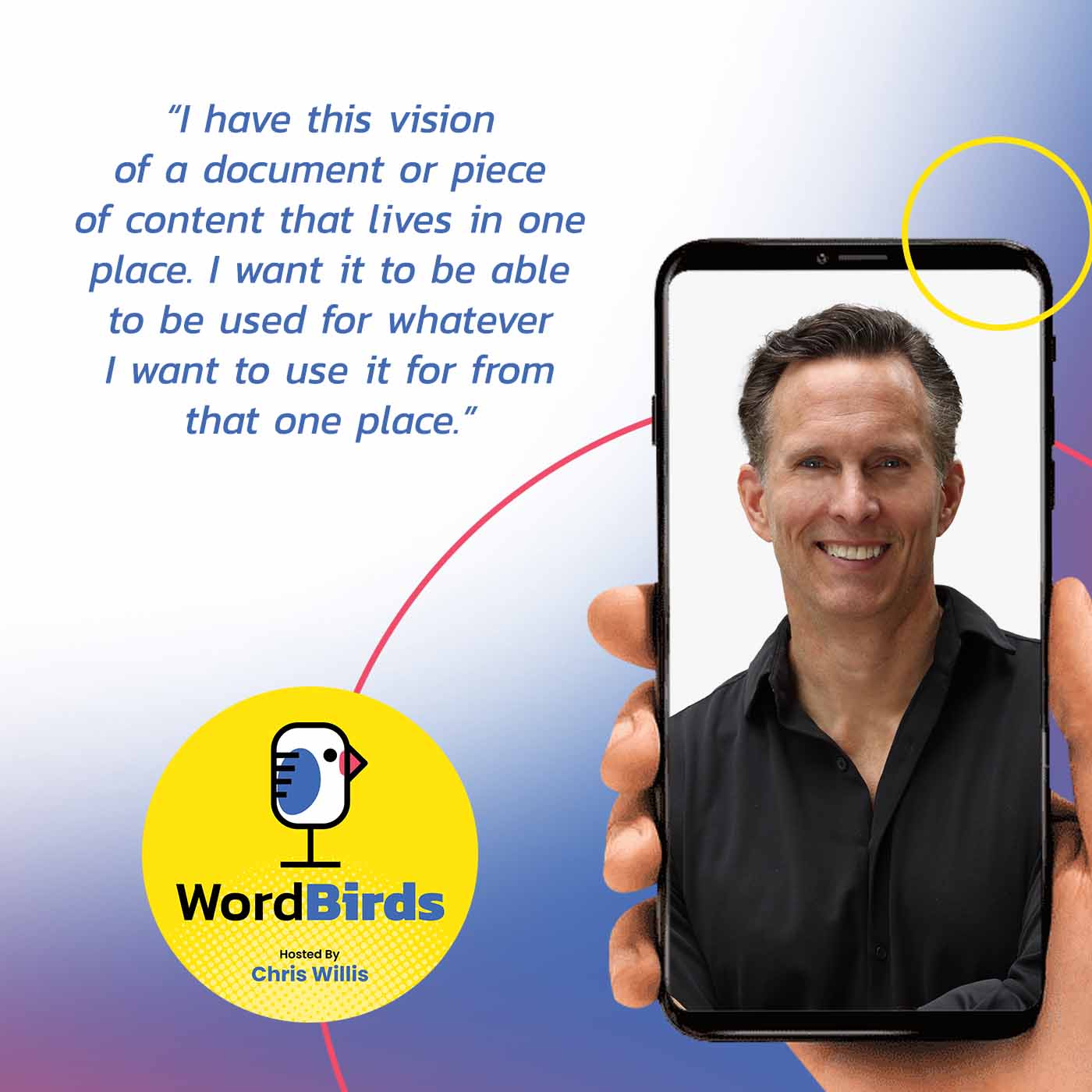
That’s a thing that we’re going through here as well. How do I look at product marketing and build that into the content engine or the revenue engine? It’s largely thinking of ROI tools, business cases, customer reference cases, and all the things that come out of that group. What’s the purpose? Sell faster. If we’re selling more effectively with a higher conversion rate in a shorter amount of time, we can put some benefit back on the content team and the product marketing team.
There’s bonusing going on in those groups associated with weighted pipelines, so the percentage of unweighted pipelines that we think are going to close is based on the stage that it’s moved to. If we’re hitting our weighted pipeline goals, it could be that it’s partially because of that content. Hooray for product marketing. It might not be, but it likely is. It’s a way to bring them into that revenue engine and make that team think more about the end result. It’s not just the creation of this content. It’s the purpose of the content that’s driving deals faster. I don’t know if it’s right or wrong but it’s definitely what I’m doing right now.
I’m with you. I’m going to take all the credit when we sell more.
That’s what you’re out to do. You’re putting tools in place that are designed to lubricate the whole sales process. It just makes it easier. At the beginning of the funnel, you’re being found. That’s obvious. You’re converting somebody into interest. Are you educating them to a point where they’re ready to take the deal to the economic buyer and the business? They recognize the value and they’re willing to stand up for it. We don’t think about that in marketing as much because it’s a sales thing.
How are they doing that? We should be providing them with that content and everything that goes around that to drive through validation and into the purchase. It’s exciting when you think about that full content life cycle and how we can impact the rest of the process. It’s also a little terrifying if your bonus is tied to that. It’s challenging, but all things said, it makes what we do more critical in the eyes of the company.
I would say that my journalism background helped me with that. I’ve come in and done a lot of interviews around the organization to see what’s being assumed and what you’re actually hearing. What is it that’s missing the mark? What are you using? When are you using it, and how are you using it? Doing some of that investigation at the forefront has helped to lay the foundation for where we’re headed, or at least I hope where we’re headed.
You create a piece of content and think, “This is amazing. This is the one. This is going to do it.” You put it out and now it’s in post-publication. It’s out in the world and it doesn’t perform. It might just be that people in the world are dumb. It might be that there are things that you can do to make that piece and future pieces more valuable. What you’re doing with going out and trying to understand that is bringing that full circle, and educating the process of, “This didn’t work. I’m going to take the best from these things and continue this strategy to build around what’s working,” which is a mature content approach. Congratulations.
Thank you.
We could talk all day, but I do want to at least allow people to find you. If people want to continue this conversation with you, do you have a LinkedIn that people could find you on?
It’s Lisa M Spinelli. I’m active on LinkedIn, at least I used to be. That’s where you’re going to find me now. I used to do a podcast. I don’t have that podcast anymore because it used to be with ATD. I would say it’s a great podcast, the Accidental Trainer. Please don’t look me up on Twitter. I think there are a bunch of ridiculous photos of me. That’s about it.
I guess I know what I’m doing with my afternoon.
There you go.
Lisa, thanks for being on the show. I got a lot out of this. I hope our audience did too. Everybody, thanks for joining us. We’ll see you next time.
Important Links
- Degreed
- Association for Talent Development
- Clifton’s Strengths
- Paperflite
- HubSpot
- Domo
- Lisa M Spinelli – LinkedIn
- Twitter – Lisa Spinelli
- WordBirds – LinkedIn
- WordBirds – Home page
About Lisa Spinelli

Lisa Spinelli is the director of content strategy at Degreed, editor of the book “Teachers to Trainers” and author of the workbook “Take Charge of Your Career Path”. Lisa has been in the content and journalism industries for over 15 years, is a veteran spouse, and a transition coach.
